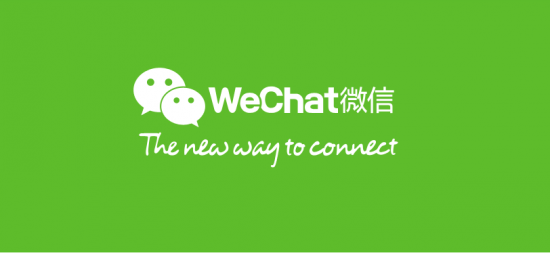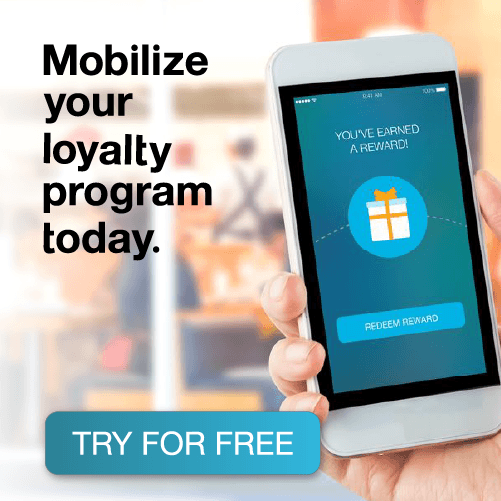WeChat is an extremely popular app in China and other parts of Asia, while it is best known for being a messaging app, WeChat is actually so much more. WeChat offers true insight into what an all-in-one platform looks like and could offer insight into the future of the entire mobile industry.
The people outside of Asia who have heard of WeChat typically view it as a messaging app. While this is what it’s core purpose is, this isn’t what I want to focus on. WeChat has managed to break away from messaging and offer many other features and services. This is the amazing part about WeChat.
Why does it matter in the Western world?
WeChat matters because this is the direction that we are going to see apps like Facebook Messenger, Twitter, Snapchat, and Whatsapp move towards. In fact, we already are seeing them move towards WeChat’s way of doing things. Let me explain what WeChat is and what it’s doing and then I’ll show you how our mobile world is going to follow right in their footsteps.
What is WeChat?
Founded just 4 years ago in China, WeChat(Chinese name Weixin) is a messaging app that allows for users to send texts, voice, and photos much like WhatsApp and Facebook Messenger. But WeChat doesn’t stop there. WeChat users in China can also use the app to hail a taxi, order food delivery, buy movie tickets, play casual games, check in for a flight, send money to friends, access fitness tracker data, book a doctor’s appointment, get banking statements, pay the water bill, find geo-targeted coupons, recognize music, search for a book at the local library, meet strangers around you, follow celebrity news, read magazine articles, and even donate to charity, that is a lot more than just messaging some friends.
The important thing is that it’s not just that users can do all of this with WeChat, it’s that they are doing all of this with WeChat. WeChat has managed to get users to adopt many of their different features far better than Facebook and Twitter have. This is because they have figured out how to use the app-within-an-app model effectively.
WeChat’s app-within-an-app model
WeChat’s goal is to help their users throughout every hour of their day, which is different than Facebook or Twitter who just want to gain as many monthly average users(MAUs) as they can. WeChat really focuses on integrating mobile into every aspect of their users lives, not just the social aspect.
WeChat has millions of apps within its platform. These are not full scale apps like we see on our phones but rather lightweight apps that use WeChat’s API. WeChat calls them “official accounts”, and there are more than 10 million of them approved by WeChat. These official accounts are not like the verified accounts that we see on our social networks, rather WeChat’s official accounts are approved to access exclusive APIs for payments, location, direct messages, voice messages, user IDs, and more.
User’s then add official accounts like adding a friend, they can then access these apps right within WeChat. This allows businesses and users to gain the features of having an app without having to download separate apps each time. For example, instead of having to download McDonald’s app and a taxi service app, users would add them on WeChat and have the access to main function that a regular app would provide. Except now they are all accessible through one platform.

This has become so popular that many startups and businesses roll out the early versions of their apps within WeChat first. This way they can test and figure out how to market their app before having to build a full scale stand alone app. The other advantage that this has for developers is that it eliminates the need to develop for multiple OS’s. This can save a lot of time and money on the businesses end. The other great thing is that WeChat doesn’t dictate the design of the apps. A user can enter a full web page like experience without ever leaving WeChat. This allows for the developer to offer a distinct and unique full app like experience right within WeChat’s interface.
Is this model working?
Some of you are asking is this format even working? You know that Facebook, Twitter, and Snapchat have had a hard time driving adoption for their new features and you’re wondering whether or not WeChat pulled it off. As of Q3 results, WeChat now has over 650 million monthly active users and is growing at a rate of 6% to 9% per quarter. For perspective, Whatsapp has over 900 million MAUs but is available worldwide. In regards to revenue, WeChat’s average revenue per user is estimated to be above $7 USD, while Whatsapp sits at a $1 USD per user. That’s 7X the amount of Whatsapp and WeChat is free to download and use. So yes, WeChat’s app-within-an-app model is working.
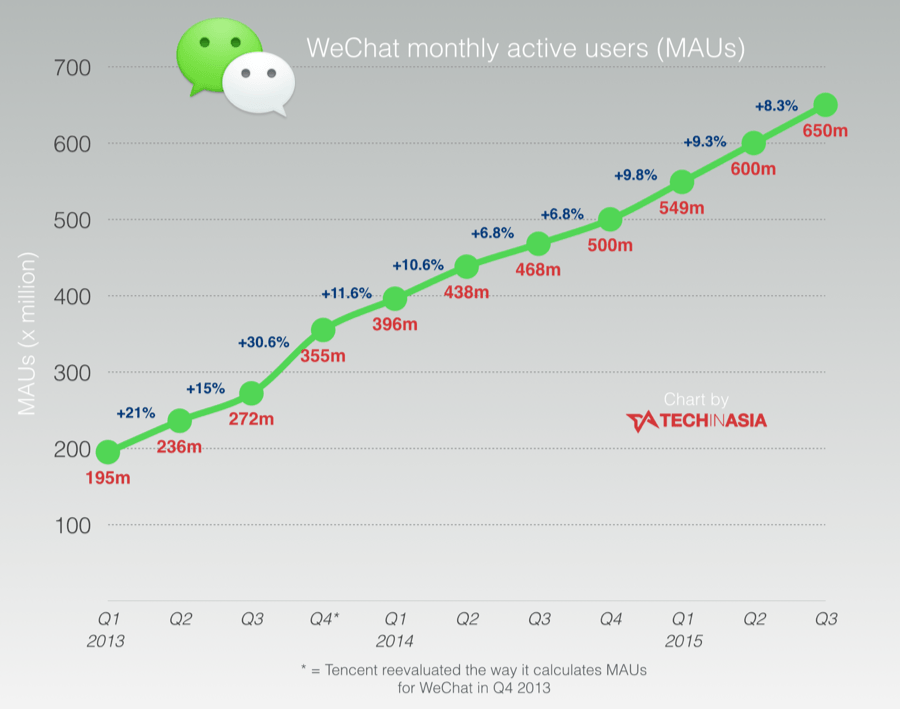
WeChat Wallet is the key to driving such high revenue per user.
Another fascinating and major part of WeChat is WeChat Wallet. WeChat Wallet sits in its own portal and works differently from how U.S mobile wallets work. WeChat Wallet has multiple pre selected services that users can access directly from inside their Wallet. This includes buying movie tickets, ordering a taxi, or even giving to charity.
WeChat Wallet plays an extremely important role within WeChat’s business model because it allows users to quickly insert their payments credentials. Which they use throughout all of WeChat, including the official accounts and mobile payments. For insight as to how successful this has been, At least one in five active WeChat users are set up for WeChat “Payments”, a process that begins in the Wallet menu by linking a banking or credit card to the user account. This gives users the ability to make payments within wallet as well as purchase from official accounts and give money to friends. Which as a huge impact on sales that take place within WeChat.
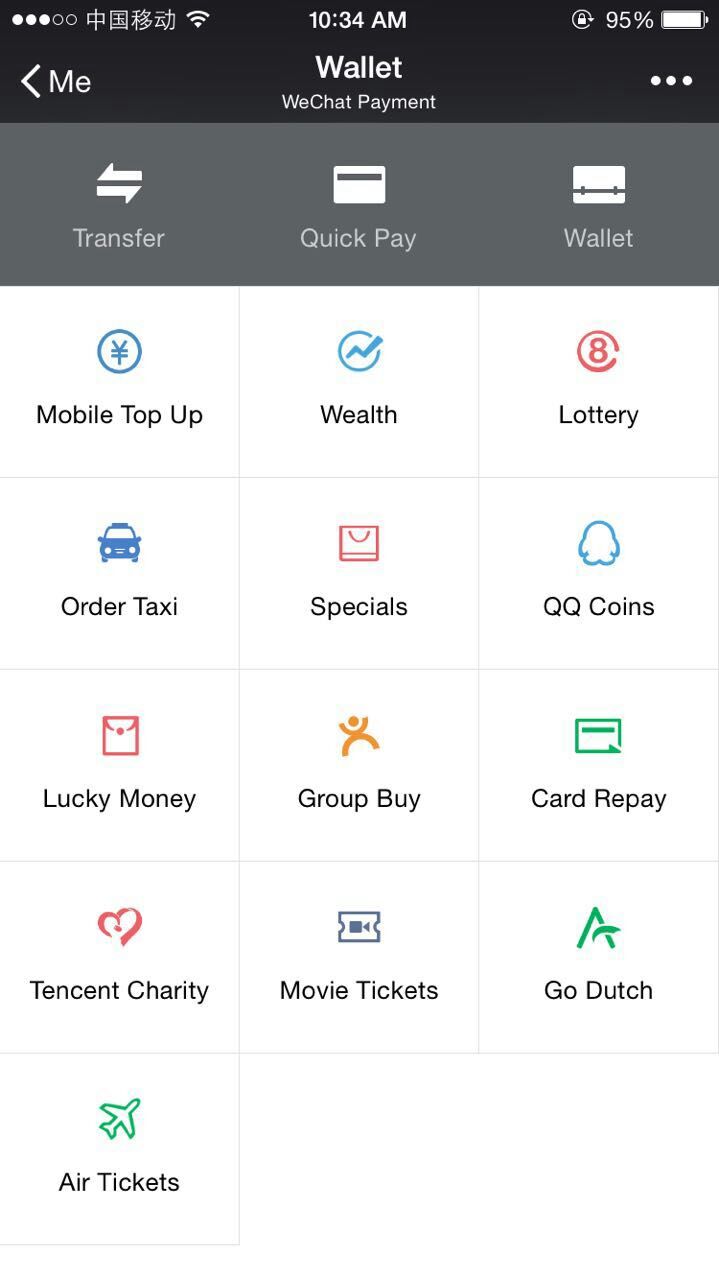
It was a big deal when Twitter rolled out the buy button on the news feed, allowing users to checkout within Twitter. That would have been way more successful had people already had their bank information within Twitter, allowing for a seamless checkout within the app. This goes for all the current apps that have purchase buttons or allow users to send money. Facebook Messenger and Snapchat have tried to enter the peer-2-peer payments industry, and they would be much more successful if they could pull off the same feat that WeChat did by getting users to enter their information directly into the app or if they would integrate with a mobile payments service such as Apple Pay.
WeChat moves from online to offline.
WeChat’s Wallet has worked so well for them they are now moving into offline mobile payments. WeChat’s mobile payment system is QR code based and works much like the QR code based mobile payment providers in the U.S. The reason WeChat has moved into brick and mortar mobile payments is because it will increase the amount of users who enter their bank information within the app. Which leads them to using all the other features within the wallet.
WeChat Wallet also works like other mobile wallets in that it can have passes stored in it and can take advantage of iBeacon technology. Partnering with Bright Beacons, official accounts within WeChat can use iBeacon technology to give customers coupons, vouchers, and membership cards all within the WeChat Wallet.
WeChat gives businesses a strategic advantage because they don’t have to get consumers to download their app in order to receive their beacon signals. Instead, the messages prompted by beacons arrive within WeChat’s “Shake” feature. A good example of this is told by blogger Astronautchina.
“A few days ago, my friends and I went in Beijing for dinner. Several people were waiting at the restaurant in line. Because of the use of iBeacon, the restaurant was able to introduce an innovative way to keep their customers entertained. People kept shaking their phones from time to time for them to have the chance to receive free coupons and vouchers, and inquire about the restaurant’s membership card. I can say that the encounter with iBeacon really left me astonished on how it was able to provide interaction and how it was able to enhance the experiences of the customers.”
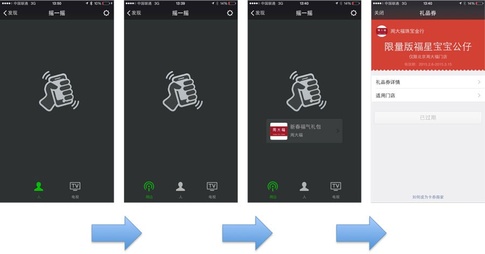
This worked great for the business because so many people use WeChat and understand its capabilities. In the U.S., adoption rates are lower due to people being unaware of the technology. But as this shows, as more people become aware of the technology the better the customer experience will become.
How did WeChat drive these high adoption rates?
One thing mobile wallet users in the U.S. understand is that adoption rates are slow. They are picking up speed as more companies and businesses jump on board, but it will still take time for the masses to start using the mobile wallet. WeChat has managed to gain extremely high adoption rates for WeChat Wallet. But it didn’t happen overnight.
WeChat promoted WeChat Wallet like crazy and dished out a lot of money doing it. One campaign they did was on the Chinese New Year, where third party advertising gave away over $81 million USD to WeChat Wallet users in a single day. WeChat also teamed up with ridesharing services to give away free rides to users. These campaigns are much like the ones ran by the London Underground to entice people to use Apple Pay when paying for public transportation. It shows that giving the consumer a little nudge can have a great impact on mobile wallet adoption rates.
WeChat- Key Takeaways
WeChat put mobile first
WeChat put the entire mobile experience above the social experience. That is what lead them to integrate so many third party apps and features that were beyond social. This quest to utilize the entire mobile experience has allowed WeChat to offer so much more to it’s users and make a lot more money than other messaging apps.
The app-within-an-app model worked for them
In the U.S., apps are much more niche and do very specific things. We have started to see our social media apps try to develop more capabilities but adoption rates are on the lower end as of now. WeChat was able to make the app-within-an-app model work because it offered so much value to businesses and consumers. The key is that it added value and didn’t just appear as a way for them to make money. They made it easy for developers and consumers.
WeChat Wallet drives revenue and app usage
WeChat Wallet is fundamental in the success of WeChat. It has helped them drive revenue but also has created a lot of value within the app. Without WeChat Wallet, WeChat may still be just a messaging app with some cool features inside. But now WeChat serves the entire mobile ecosystem and offers more benefits than any app could provide on its own. It is also what drives such a high ARPU.
WeChat focused on the user experience
Overall WeChat focused on providing the best possible experience that a mobile app can provide. From messaging, apps, payments, and iBeacons, WeChat does it all and does it all extremely well. This way of doing things is going to slowly leak into the mobile ecosystem of the western world. Users will tire of downloading individual apps for every store, they will begin to realize the benefits of having a mobile wallet than can pay within apps as well as stores. And they will see the benefits of iBeacon technology. Which brings me to the overall point of this article.
WeChat offers great insight into the future of the mobile ecosystem
As I mentioned before, we have begun to see apps like Facebook Messenger and Snapchat integrate some of WeChat’s features. The problem is that we still have too many apps focused on doing one thing. Which is creating a saturated market and hurting the overall user experience. Which is then causing poor adoption rates. Luckily, we are beginning to see an end to this.
The elimination of apps
Apps will never be fully eliminated but in the future we will begin to see a lot less of them. And WeChat shows us why. The apps within WeChat work much like web pages. They are simple and take far less programming than a full on app, yet they have a lot of the same capabilities.
The Physical Web will be a major driver in web page based applications. With the Physical Web, the user needs to have one app downloaded(the Physical Web app), they can then interact with objects around them through URL’s. This allows for businesses such as restaurants to interact with users on their mobile devices without having to build an app or get customers to download it.
The Physical Web also allows for businesses to utilize beacon technology without having to build an app and consumers can experience beacon technology without having to download every businesses individual apps. This is a huge advantage that WeChat has. Users were able to get the beacon offers directly through WeChat when standing outside the restaurant. This would not have worked as well if all the people standing in line would have had to download an individual app. That is a loss for the business and the consumer.
To see the Physical Web in action, check out the video below.
Mobile payments within apps
Currently we have apps like Uber and Etzy that accept mobile payments directly in the app. When more apps such as Facebook, Twitter, and Snapchat begin to utilize this we will see a rise in adoption rates for both in app purchases and mobile payments just as WeChat did. Having pre-existing mobile payment services such as Apple Pay integrate within the apps is the key. Adoption rates suffer greatly when users are forced to sign up for multiple mobile payments services. WeChat has a huge advantage because users sign up through them, and gain access to paying with their phone in millions of apps. Never having to reinsert their information.

Mobile payment adoption takes time and promotion
Many people in the U.S. have begun writing mobile payments off due to low adoption rates. But as WeChat shows, getting mobile payments adoption takes a lot of promotion and time. As more businesses get on board, the more promotion we will see. Discover offered cash back incentives to people using Apple Pay and the London Underground offered free travel. As we see more of these promotions we will also begin to see higher adoption rates. WeChat has shown us that that type of promotion works.
The future of the mobile ecosystem must be built towards the entire mobile experience.
WeChat has shown us that if apps begin to work with each other and offer a much more integrated seamless experience between apps, adoption rates for new features will rise. If every business and every app offers their own version of everything both the consumers and businesses suffer.
I do believe that WeChat has shown us the future when it comes to full scale apps and that they will begin to dwindle to a point where only the main ones survive and the rest integrate within those main ones. This will take time but it will eventually happen.
Overall I think the future is bright in the mobile ecosystem and I think we are just beginning to tap into the true experience that it can provide. Right now, we are merely offering surface level experiences and WeChat has show that so much more can be provided through a mobile device.
I would love to hear your thoughts and opinions on how you think WeChat will shape the future of the western world mobile ecosystem and whether you think apps need to integrate or stay independent. Leave your thoughts in the comments below!
Sources and more information on WeChat in this post by Connie Chan.
